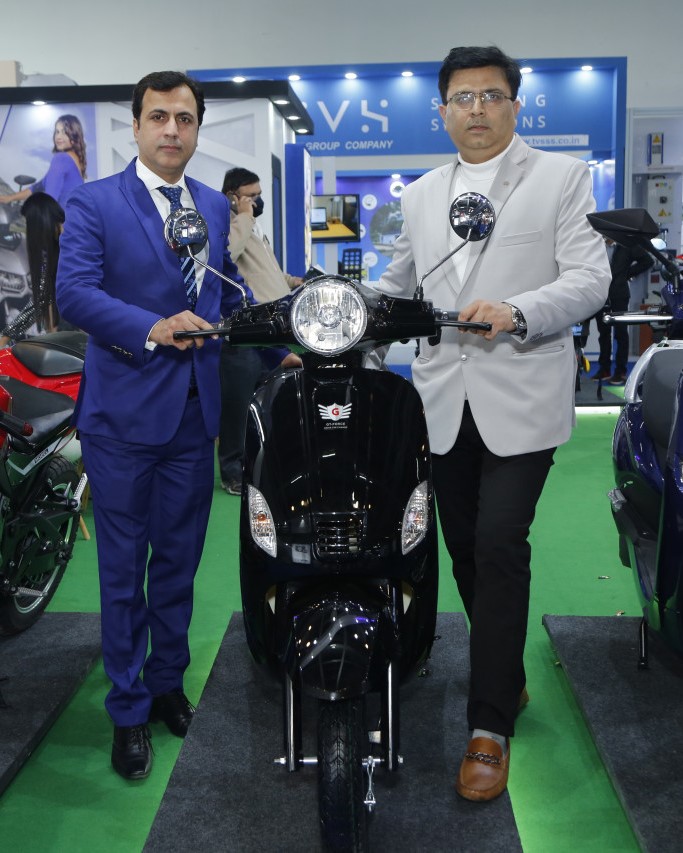Anticipating Budget 2024: Industry Leaders Outline Key Expectations for Clean Energy and E-Mobility
As the Union Budget 2024-25 approaches, anticipation is mounting within the clean energy and e-mobility sectors. Industry leaders are eagerly awaiting policy announcements that could significantly drive forward the adoption of sustainable technologies in India. From enhancing financial support for electric vehicle (EV) adoption and expanding charging infrastructure, to providing incentives for local solar cell manufacturers and continuing robust subsidy schemes, the expectations are high. The following article summarizes the key expectations from various industry leaders, highlighting their insights and hopes for transformative initiatives in the upcoming budget. These perspectives shed light on the critical areas where government action can accelerate India’s journey towards a greener, more sustainable future.
Clean Energy Industry’s Key Expectations from Budget 2024:
- Enhanced Financial Support for Rooftop Solar Adoption in tier 2 and tier 3 markets, ensuring broader reach and accessibility.
- Streamlining processes to reduce barriers and expedite the adoption of rooftop solar installations.
- Measures to support the scaling up of manufacturing capabilities to meet the rising demand for solar installations.
- Long-term support to accelerate India’s progress towards achieving its net-zero emissions goal by 2070, with the potential to meet these targets ahead of schedule.
- GST on solar components should be reduced to 5%
- Reduce import duties on solar panels and components to making solar energy more affordable and accessible.
Electric Vehicle Industry’s Key Expectations from Budget 2024:
- Introduction of a new subsidy scheme similar to FAME II, with the same value but stricter eligibility criteria focused on vehicle types and localization requirements.
- Increased emphasis on Research & Development (R&D) for EVs and batteries, with additional support for the Production-Linked Incentive (PLI) scheme.
- Measures to improve affordability for commercial EV fleets through targeted incentives.
- Significant investment in expanding a widespread and reliable charging network, especially in urban areas and along highways.
- Prioritize development EV charging stations powered by renewable energy sources to promote sustainability.
- Reduce GST on EV components and batteries to make EVs more affordable.
- Financial measures that make EVs a viable option for a broader segment of the population, encouraging widespread adoption.
- Efforts to enhance customer confidence in the resale value of EVs, supporting long-term adoption and market stability.
- Introduce export incentives to enhance the global competitiveness of Indian EV manufacturers
Below, we present the full quotes from these visionary leaders, offering a comprehensive view of their expectations and aspirations.
Insights and Expectations from Clean Energy Leaders:
Saurabh Marda – Founder & MD, Freyr Energy

“As the ambitious PM Surya Ghar Yojana, launched by Prime Minister Narendra Modi picks up pace, there is a rapid increase in households across India, adopting rooftop solar to claim subsidies. This covers up to 40% of the installation cost with additional financing options to further ease the adoption in tier 2 and tier 3 markets. The scheme is expected to benefit 1 crore households across the country aiming to achieve India’s goal of attaining net-zero emissions by 2070. Improved integration of DISCOM’s with the National portal will play a significant role in helping customers transition to solar quickly. In addition to this, providing incentives to local solar cell manufacturers will be important, because it ensures that supply will keep up with the upcoming demand for solar modules with made in India cells. Finally, continuing the subsidy scheme and other similar initiatives for the next few years will help companies in this sector scale up and will help India meet its net zero goals ahead of schedule”
Ratul Puri – Chairman, Hindustan Power Group

First, we need substantial financial support from the government, as we must add a minimum of 50 GW of renewable energy capacity annually to reach our target. Additionally, investment in R&D is crucial to ensure that the equipment we produce, such as solar panels, can withstand extreme weather events like heatwaves.
To make our projects competitive and economically viable, the GST on solar components should be reduced to 5%. It will encourage broader adoption of solar energy across the country. Moreover, reducing import duties on solar panels and components will be essential to making solar energy more affordable and accessible. Local manufacturers should be provided incentives and subsidies, better access to working capital, and viability gap funding to reduce dependence on imports.
Insights and Expectations from E-Mobility Leaders:
Maxson Lewis – Founder & CEO, Magenta Mobility

As we await the forthcoming July Budget, the logistics sector braces for a transformative leap. During the interim budget, we saw the government’s commitment towards expanding the EV ecosystem in India and underscored the need to develop more charging stations.
While lauding previous initiatives like FAME II and EMPS, expectations are high for a new subsidy scheme akin to FAME II, with equivalent value but more stringent eligibility criteria for vehicle types and localization requirements. The subsidy scope is anticipated to expand, covering larger vehicle segments like trucks in addition to passenger vehicles, two-wheelers, and three-wheelers.
A significant emphasis on Research & Development (R&D) and domestic manufacturing capabilities for EVs and batteries is expected, with the Production-Linked Incentive (PLI) scheme receiving further support. Revisiting EV’s priority lending sector status and reinforcing efforts are also on the cards.
Crucially, affordability for commercial EV fleets and planned innovation must take center stage through incentives, making EVs cost-effective for fleet operators, driving efficient logistics solutions, and fostering a sustainable transportation ecosystem. Amped-up R&D funding could unlock lighter, safer, domestically made batteries, thus lowering costs and boosting performance as well as rendering sustainable transportation practical and profitable.
Samarth Kholkar – CEO & Co-Founder, BLive

As we approach the upcoming union budget in July 2024, we have high expectations from the government, so that there are policies that can significantly drive the adoption of electric vehicles across India. To truly accelerate India’s shift towards electric mobility, we need a robust government policy that can incentivize both manufacturers, individuals, as well as the larger ecosystem. This includes subsidies, tax benefits, lower GST rates for EVs and making EVs more accessible to the larger public. Equally important is the development of a widespread and reliable charging infrastructure. We urge the government to invest in expanding this network, particularly in urban areas and also along the highways. This will address the range anxiety issue that many potential EV buyers face. Additionally, better financing options are crucial to support consumers in making the switch to electric vehicles. Affordable loans and flexible financing schemes can make EVs a viable option for a larger segment of the population. Finally, we must also consider the resale market of electric vehicles. Establishing a strong resale market with standardized valuation models will enhance the customer confidence and support the long-term adoption of electric vehicles. In these areas, we can pave the way for a greener and a more sustainable future in India.
Kunal Arya – Co-Founder & Managing Director, ZELIO Ebikes

As we approach the budget 2024-25, the EV industry is eagerly anticipating several key measures to drive growth and adoption. Increased subsidies will make electric vehicles more affordable for a broader range of consumers, fostering widespread adoption. Expanding the network of charging stations, especially those powered by renewable energy, is essential for supporting the EV infrastructure and addressing range anxiety. Reducing the GST on batteries and components will lower costs, making electric vehicles more accessible to the masses. Simplifying financing options for EV purchases will further encourage adoption by easing the financial burden on consumers. Promoting fleet electrification can significantly cut emissions and showcase the viability of electric vehicles for commercial use. Export incentives will help Indian EV manufacturers compete globally and expand their market reach. Additionally, skill development programs are vital for building a knowledgeable workforce to support this growing industry. Enhanced R&D grants and support for innovation in EV technology will ensure India remains at the forefront of the global EV revolution. We believe these measures will collectively propel the EV sector towards a sustainable and prosperous future.
Hyder Khan, CEO and Director, Godawari Electric Motors

With the Central & State Government’s strong push towards a greener future, we have high expectations from the upcoming budget for the EV sector, particularly for those who believe in the ‘Make in India’ model. As we approach the 2024 budget, the electric vehicle industry stands at a pivotal juncture. We are looking for continued support and substantial policy enhancements to accelerate the transition to sustainable transportation. We urge the government to consider increased subsidies for electric two-wheelers and three-wheelers, as well as incentives for domestic manufacturing and R&D initiatives. Additionally, investments in charging infrastructure and battery technology will be crucial to overcoming existing barriers to widespread EV adoption. Our vision is to make clean and affordable mobility accessible to every citizen, and with the right fiscal measures, we can make significant strides toward achieving this goal. We are hopeful that the upcoming budget will reflect a strong commitment to fostering innovation and growth within the EV sector, ultimately contributing to a greener and more sustainable future for India.
Mukesh Taneja – CEO and Co-founder, GT Force

As we approach the Union Budget 2024-25, GT Force, an emerging player in the electric two-wheeler segment, views this as a critical juncture for India’s EV industry. With the short-term EMPS 2024 set to end on July 31, 2024, we urge the government to introduce a robust, long-term successor to this scheme that addresses the evolving needs of the EV ecosystem. This new framework should not only continue demand incentives for consumers but also focus on supply-side interventions to boost domestic manufacturing and innovation. Specifically, we anticipate increased budgetary allocation for expanding EV charging infrastructure nationwide, as this remains a key factor in boosting consumer confidence in electric mobility. We also hope to see incentives for battery technology development and localization of EV components, which are crucial for reducing costs and enhancing the competitiveness of Indian-made EVs. Furthermore, we expect the government to consider reducing GST rates on EV components and batteries from the current 18% to 5%. This tax rationalization would help offset the potential price increase resulting from the conclusion of subsidy programs and keep EVs affordable for the masses. For startups like GT Force, we hope to see targeted initiatives that support R&D, provide easier access to capital, and offer production-linked incentives. These measures would enable us to scale operations, innovate rapidly, and contribute more significantly to India’s EV manufacturing capabilities. Moreover, we anticipate policies that promote the integration of EVs with renewable energy sources and support the development of a circular economy for EV batteries. This holistic approach would not only boost the EV industry but also align with India’s broader climate goals and commitment to sustainable development

